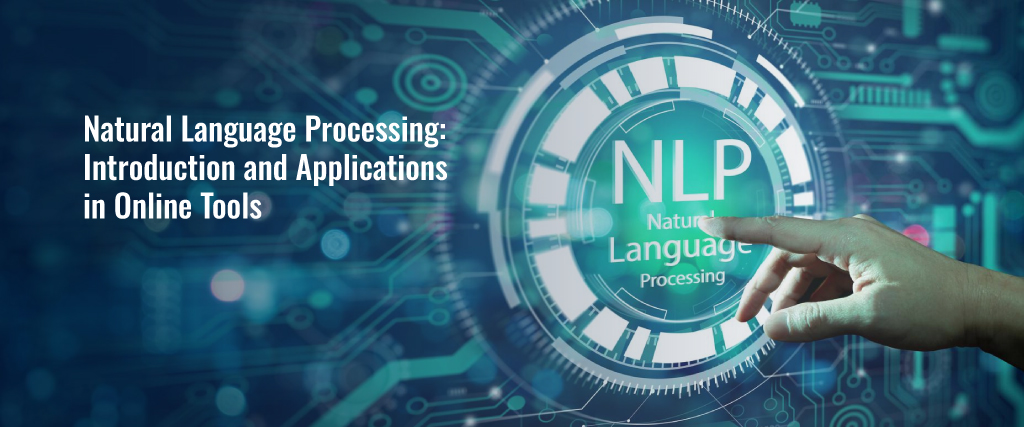If you are in the habit of using online AI-driven writing tools, you may have heard the term “NLP” quite a bit.
A lot of online tools mention this term when explaining the workings of their algorithms.
If you don’t know what this means, don’t worry at all.
In this post, we are going to give you a brief overview of NLP, and then we will talk about how it is applied and utilized in online tools.
What is NLP?
NLP stands for Natural Language Processing.
What are Natural Languages?
Natural languages are basically the languages that humans use. You’re reading this right now, and it’s written in English.
English is a natural language. So are Spanish, German, French, and the multitudes of other lingos that are spoken around the world.
What is Natural Language Processing, and What Does it Do?
Now, NLP is basically the technology that allows a computer or software to process and understand natural languages.
This may seem a little obvious, but it has to be remembered that computers and computerized software are, after all, machines.
They run on code—which ultimately consists of 1’s and O’s.
For a machine to be able to understand sentences and phrases in English, French, and German is not something very easy.
That is why NLP exists.
NLP helps computers and machines to understand the meanings carried and conveyed by natural languages.
It is basically a sub-field of artificial intelligence (AI).
The Difference Between Understanding Text and Robotically Utilizing It
Here’s something to think about. Even if a computer recognizes a passage or sentence written in natural languages, it does not mean that it understands it.
For example, you can give a computer a bunch of words and tell it to look for similar words in a certain file or database.
In such a case, the computer would simply be using the words in a pattern to complete a certain process.
NLP takes things further than that. It allows the machines to understand the tone, purpose, and style of the text.
If a computer is equipped with NLP, it would be able to understand that the statement “I’ve had enough!” is an angry utterance, whereas the statement “Cobwebs in my wallet” is an admission of being broke rather than the presence of actual cobwebs inside a wallet.
Applications and utilities of NLP in online tools
Now that we’re done looking at what NLP is, let’s understand it in a more practical way.
We will look at some common types of online tools along with how NLP is used in them.
AI assistants
Even if people were generally unaware of what AI assistants are, that has probably changed ever since ChatGPT came out.
ChatGPT is a prime example of an AI assistant.
What exactly do AI assistants do? They are made to take the request provided to them by the user, process it, and then provide an output fulfilling that request.
For example, you can ask AI assistants to provide you with ideas for writing content, or you can ask them to check and improve your write-ups, etc.
In order to do this, AI assistants have to understand the meaning and context of the provided request to get an idea of what the user wants.
You could say one thing using one tone, and the tool would understand it in a specific way, whereas the same thing with a different tone could mean something else.
To give you an example, here is a screenshot showing our conversation with ChatGPT.
Paraphrasers
Paraphrasers, or paraphrasing tools, are yet another example of online AI tools that utilize NLP.
Paraphrasing tools are made to process the provided content and then rephrase it using different words.
You can get a different version of your text that has the same meaning.
In order to understand the provided prompt and make changes to it, paraphrasers utilize NLP.
They have to make sure that the changes made align with the tone and context of the original text.
For example, take this sentence:
There are many differences to the place from when I saw it last.
If it was to be changed like this, it would not make the same type of sense:
There are numerous contrasts in the area from when I witnessed it last.
Although “contrast” is a synonym for “difference,” it does not align contextually with the specific sentence.
Paraphrasers use NLP to understand the context of the provided text to ensure that the synonyms they use are suitable.
Here is a screenshot showing an AI-based paraphraser processing a piece of text.
For the purpose of this example, we’re using a tool called Paraphrase-Online.
Text Summarizers
Text summarizers are, as the name indicates, online tools that are made to shorten a piece of text while maintaining its main meaning.
These tools have to analyze the entire text to understand all the essential details that it carries. NLP is required for this.
NLP helps the tools to understand the different sentences given in the content and get an idea of their overall importance in explaining the core meaning.
In this process, the unnecessary details can be identified and removed from the final output.
To give you a better idea of how these tools work, here is a screenshot showing one in action.
For the purpose of this demonstration, we’re using a tool called Summarizer.
Conclusion
And there you have it.
NLP is an important branch of AI that is utilized by a lot of online AI-based writing tools nowadays.
In the post above, we have talked about what function it essentially performs, as well as the various types of tools that it is used in.







